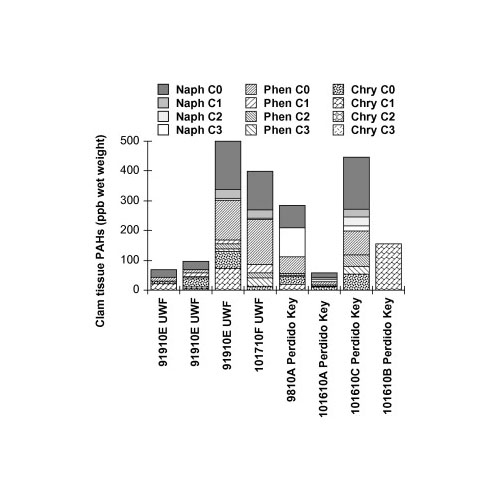
PAH in Coquina
PAH concentrations in Coquina (Donax spp.) on a sandy beach shoreline impacted by a marine oil spill
Typically, mussels and oysters are used in the Gulf of Mexico as biological indicators of coastal pollution. These organisms populate low energy, estuarine regions. What kinds of organisms can scientists look at in higher energy regions, like sandy coastlines? C-IMAGE researcher, Richard Snyder, and his collaborators at the University of West Florida take a look at the PAH concentrations in Coquina clams who make their home in higher energy environments and found higher levels of PAHs in the clams than in the surrounding sand after the BP MC252 well failure. With continued sampling, they found a gradual decrease of PAH concentrations in Coquina tissues.


